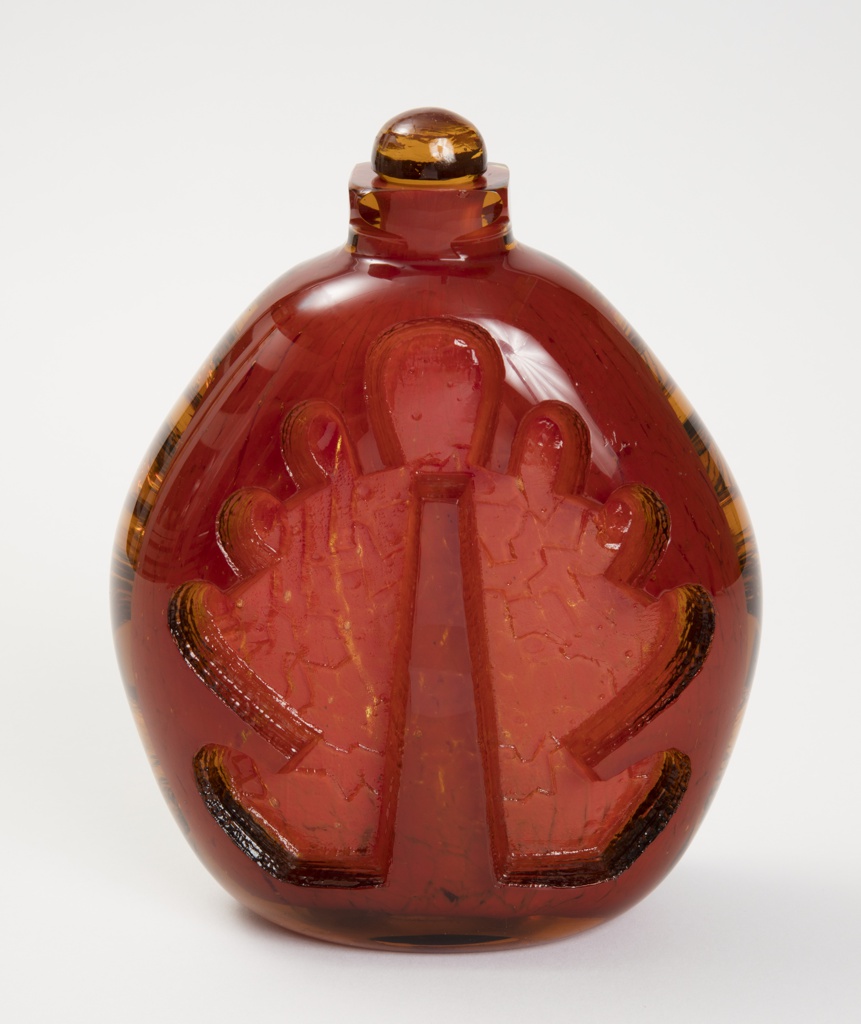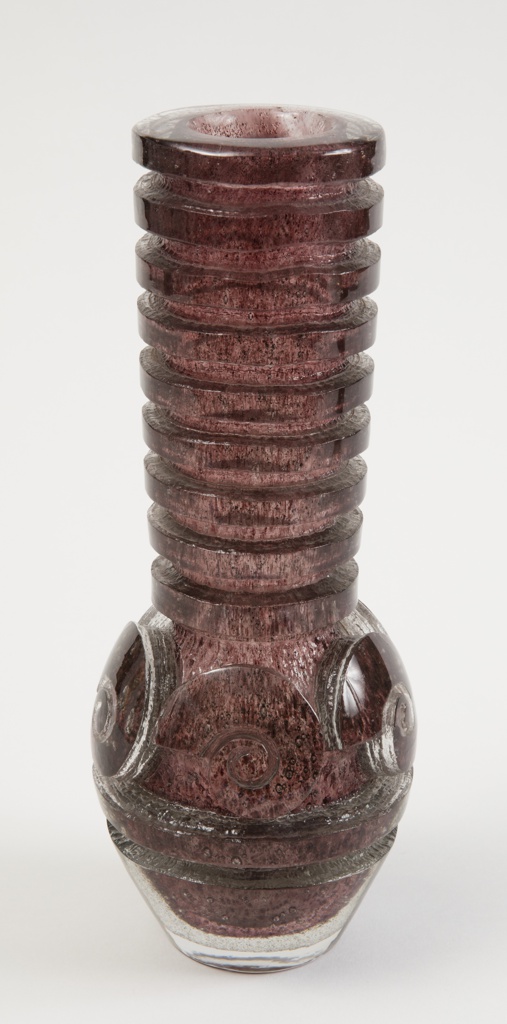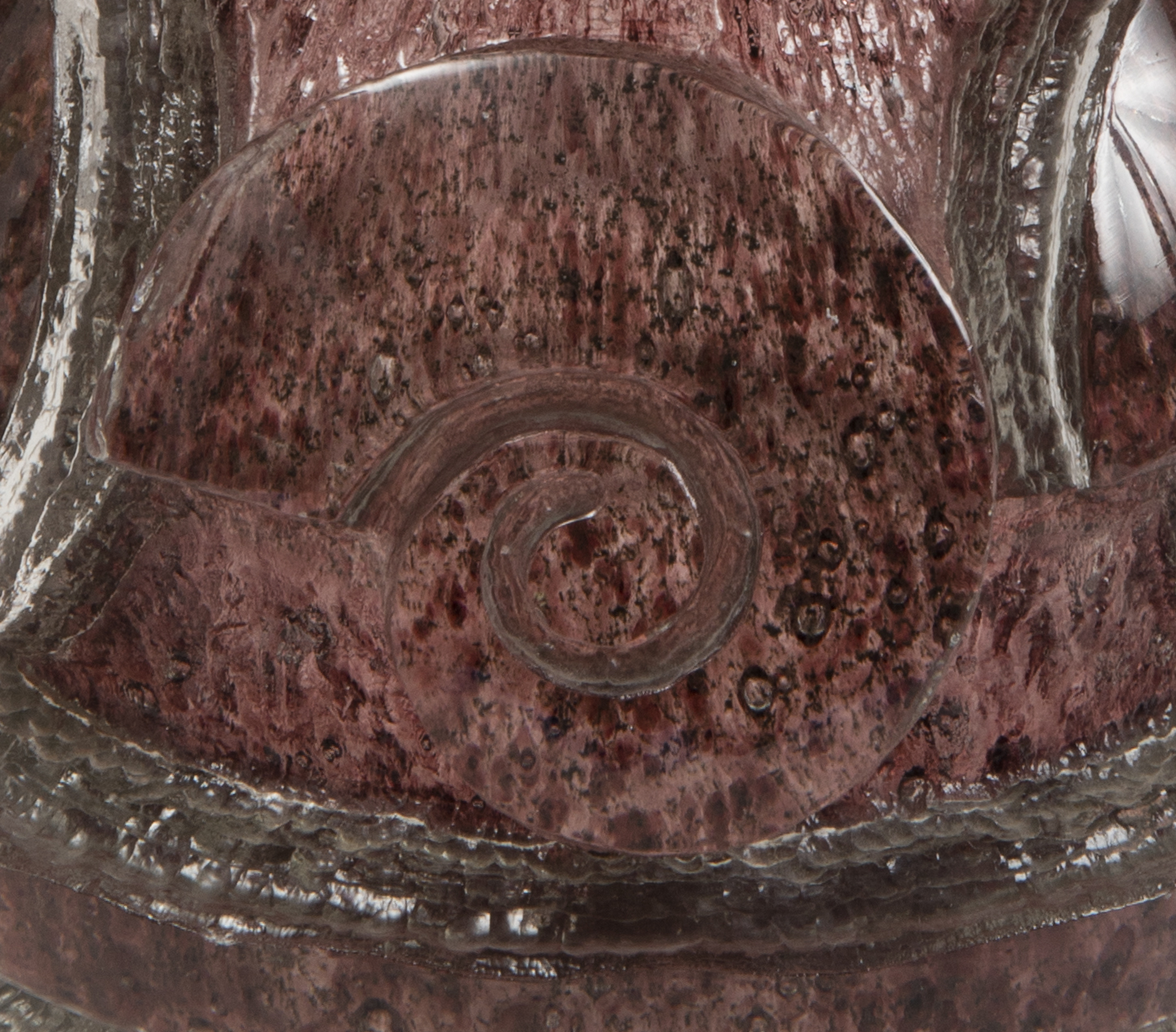Written by Jasmine Keegan
The United Nations has designated 2022 the International Year of Glass. Cooper Hewitt is celebrating the occasion with a yearlong series of posts focused on the medium of glass and museum conservation.
In the early 20th century, access to new technologies and materials encouraged artists such as Maurice Marinot to push traditional media in novel directions. Educated as a painter at the École de Beaux-Arts in Paris, France, Marinot began his career creating paintings in the Fauvist style, an early-20th-century art movement that focused on the use of rich color and expressionistic form over realistic presentation (les Fauves is French for “the wild beasts”). He later successfully translated this approach, through color and form, into a different medium: glass. He eventually mastered the technique of acid etching to create dramatic decorative features in his glasswork. This process consists of covering the glass form with an acid-resistant substance and leaving the desired design unprotected. Once the surface is exposed to the acid and rinsed, often multiple times, the unprotected sections are gradually eaten away, revealing the intended design. The work is extremely dangerous as exposure to the acid used can be fatal. Cooper Hewitt’s bottle and stopper and Escargot vase showcase Marinot’s skill and ingenuity in using this technique while also featuring imaginative designs.

Bottle, ca. 1935; Designed and made by Maurice Marinot (French, 1882–1960); Blown, cased, carved, acid-etched and polished glass; H x W x D: 21.6 × 16.5 × 7.6 cm (8 1/2 in. × 6 1/2 in. × 3 in.); Gift of Margot and Robert E. Linton, 2018-11-4-a,b

Escargot Vase, 1924; Designed and made by Maurice Marinot (French, 1882–1960); Cased, acid etched, carved and polished glass with inclusions; H x diam.: 27.3 × 9.5 cm (10 3/4 × 3 3/4 in.); Gift of Margot and Robert E. Linton, 2018-11-1
Though Marinot initially focused on working the glass surface, he eventually learned to blow his own glass pieces, which allowed him to create the thick walls required for his deeply delineated designs. Though these forms risk appearing heavy and ungainly, Marinot’s selective contrast between colored and non-colored glass imbues the pieces with a sense of fragility, making the weighty objects seem delicate. The Escargot vase above appears to float, with a layer of colorless glass encasing the purple form within. He further prioritized sculptural effects over function, as in the bottle above, creating vessels with stoppers that were disproportionate to the size of the body. With this approach to design, Marinot plays with the viewer’s expectations, moving away from typical functional forms to more expressive decorative pieces.
Marinot also exploited the presence of small air bubbles that can form in hot glass when it is in a molten state. Though bubbles in glass can be seen as flaws, Marinot found beauty in the bubbles and welcomed them in his pieces, learning to control the size and dispersion of the air. He successfully turned a flaw into a design feature. Texture was also created through the acid process itself, and the areas that were so etched display uneven surfaces, which again contrast in an exciting way with the smooth sheen of the surrounding glass. Overall, Marinot’s rich understanding of the glass and its working properties facilitated the innovative forms we enjoy today.

Detail of the Escargot vase showing the effect of the bubbling.
Jasmine Keegan is a pre-program intern in conservation at Cooper Hewitt, having previously held internships at The Cleveland Museum of Art and the Whitney Museum of American Art. She graduated from Oberlin College in 2020 with a degree in art history.